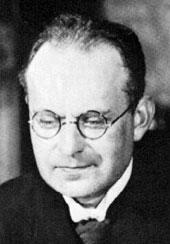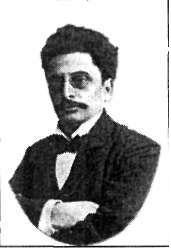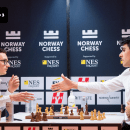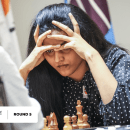Aron Nimzowitsch

Bio
Aron Nimzowitsch was a Latvian-Danish chess player best known for his 1925 book, My System, which features his approach to chess that became part of a philosophy known as hypermodernism. Nimzowitsch was one of the best players of any style in the 1920s and early 1930s.
Early Life And Career
Nimzowitsch was born in Riga on November 7, 1886—50 years and two days before world champion GM Mikhail Tal, and in the same city. By 1904, Nimzowitsch was studying philosophy in Berlin, where he began his serious chess career, playing largely in German clubs and tournaments. In 1910 he placed third at a tournament in Hamburg, behind Carl Schlechter but ahead of Rudolph Spielmann, Frank Marshall, Alexander Alekhine, Siegbert Tarrasch, and Savielly Tartakower. Hamburg would feature the first serious game between Nimzowitsch and his rival Tarrasch, but not the last.
Mid-Career
The Russian Revolution of 1917 set off a chain of events in Nimzowitsch’s personal life that ended with his moving to Denmark in 1922. Soon after he established himself there, Nimzowitsch really began to peak as a chess player.
A year after reaching Denmark, Nimzowitsch finished two points ahead of a six-player field in Copenhagen. It was there that he played perhaps his most famous game.
Two years later, Nimzowitsch would begin outlining the methodologies he used to win such games when he began publishing My System, starting in 1925 and completing in 1927. Also in tournaments in 1925, Nimzowitsch shared first place in Marienbad, Czechoslovakia, and finished second at Breslau, Germany (now Wroclaw, Poland).
In 1926, Nimzowitsch played his famous Qd8-d7-f5-h7 game against Paul Johner in a Dresden tournament that Nimzowitsch won with a near-perfect 8.5/9, 1.5 points ahead of Alekhine. Johner was Nimzowitsch’s only opponent in the tournament who opened with 1.d4 and allowed Nimzowitsch to play the Nimzo-Indian Defense.
It is no surprise—given his results at Copenhagen 1923, Marienbad 1925, Dresden 1926, and elsewhere—that by the mid-20s Nimzowitsch was confident enough in his abilities to challenge Jose Capablanca to a match for the world championship. However, Nimzowitsch was unable to gain enough funding. Capablanca played Alekhine in 1927 instead and lost the crown.
My System
When Nimzowitsch began My System by outlining the elements of chess, number one on his list: the center of the board. Indeed, Nimzowitsch and the hypermoderns became known for their novel approach to the center.
Not until about two-thirds of the way through the book, however, is the most-known insight of Nimzowitsch and the hypermoderns found. The center, says Nimzowitsch, is about the squares, not the pawns occupying it. Pawns in the center even can have the adverse effect of closing lines and thus reducing control of the center.

At this point, Nimzowitsch criticizes Tarrasch in a barely concealed fashion. Tarrasch “took hold of [world champion Wilhelm] Steinitz’s ideas and served them up diluted.... Nothing lay further from [Steinitz’s] thoughts than a formalistic, arithmetical conception of the center” (pp. 182-185 of the 1964 Tartan reprint of the 1930 Harcourt translation). Tarrasch also had his criticisms of Nimzowitsch, and their rivalry was no accident.
My System is not so narrow in scope, however. Nimzowitsch also expounds on rooks (open files and the seventh rank make up his next two sections after beginning in the center), pawn structure (isolanis, chains, doubled, and passed), the two bishops, and his famous strategy of overprotection. No wonder My System became known as one of the most important chess books of the 20th or any century, surpassing even Nimzowitsch’s other manuals, Blockade and Chess Praxis.
Late Career
My System was not so revelatory as to tell Nimzowitsch's fellow masters how to beat him, and his success continued into the late 1920s and early '30s. Some of Nimzowitsch’s greatest tournaments came in these years.
Most notable of these is his victory at Carlsbad in 1929. After a loss to Fred Yates in the fifth round dropped Nimzowitsch’s score to even, he didn’t lose again. In the third-to-last round, Nimzowitsch entered a rook ending and defeated Spielmann, who toppled Capablanca in the next round as Nimzowitsch drew. As a result, Nimzowitsch and Spielmann were tied, with Capablanca a half-point behind, entering the final round. Capablanca won his game, but so did Nimzowitsch, and a draw for Spielmann meant Nimzowitsch won outright with a score of 15/21.
In the first couple years of the 1930s, Nimzowitsch was perhaps the best non-Alekhine player in tournaments, finishing second at San Remo in 1930 and third at Bled in 1931. In 1932 and 1933, however, he barely played, and 1934 saw him lose a match to Gideon Stahlberg as well as finish in the middle of the pack with a 9/15 at Zurich in his last major tournament.
Death and Legacy
Nimzowitsch passed away of pneumonia in Copenhagen in 1935, when he was just 48.
Nimzowitsch’s reimagination of chess extended into the opening. The Nimzo-Indian (1.d4 Nf6 2.c4 e6 3.Nc3 Bb4) is the most famous of his ideas, and he played it 28 times, winning 14 against just six losses. He played 1.b3, the Nimzowitsch-Larsen Attack, less often but still won three of his four games with it. His less successful opening ideas included 1.e4 c5 2.Nf3 Nf6 and 1.e4 Nc6. While Nimzowitsch won a combined 24 games out of 33 played with those openings, they are considered inferior today.

As important as Nimzowitsch’s contributions to chess theory are, chess players are only as good as their ability to adapt at the board, regardless of their philosophy. Nimzowitsch demonstrated this in his performances against fellow hypermodern Richard Reti, scoring +5 -1 =5, and the classically-minded Tarrasch, against whom he had a nearly identical +5 -2 =5 score. (At the same time, however, Nimzowitsch never beat Capablanca and struggled against Alekhine. Emanuel Lasker, surprisingly, only met Nimzowitsch twice over a board, a draw in 1914 and a Nimzowitsch win at Zurich in 1934.)
Thus Nimzowitsch has his place in history as an author, a theoretician of both the opening and middlegame, and one of the great players of his era, among the strongest of any era to never become world champion.


